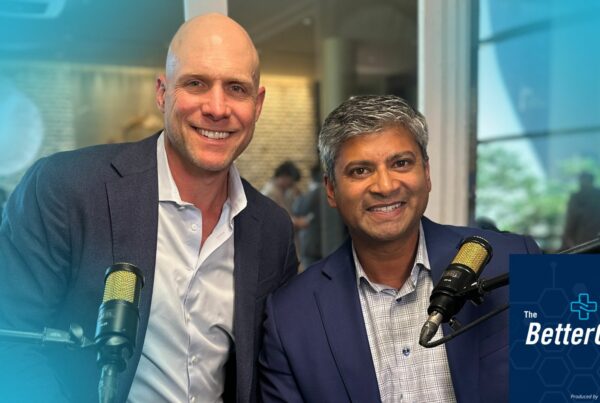Length of stay (LOS) is a critical indicator used by hospitals to measure quality care. It reflects not only efficient capacity management, but also the overall commitment to providing comprehensive and patient-centered healthcare.
In this article, we will share insights on how Vanderbilt University Medical Center (VUMC) manages capacity and length of stay, based on an interview for The Better Care Podcast between Carol Howard and Lee Ann Liska, COO & Interim President of Vanderbilt’s Adult Hospital.
Some quotes have been slightly edited for brevity.
Tracking and Measuring Length of Stay
Any hospital leader overseeing clinical operations knows the importance of tracking and measuring length of stay. The length of time a patient spends in the hospital reflects the hospital’s commitment to providing accessible and comprehensive care.
Beyond its significance as a quality measure, length of stay impacts safety and financial outcomes as well. Lee Ann shared that effectively managing and reducing length of stay where possible can better optimize the patient experience but also maximize resource utilization.
“We think about length of stay as first a quality measure, because it’s really about access to care, and then making sure that we’re minimizing prolonged exposure in the hospital environment. So, we like to think about length of stay as really a leading effort for quality and safety, but it also has direct financial impacts.” – Lee Ann Liska
Reducing LOS can help hospitals improve their financial performance. A shorter LOS frees up the resources (clinicians, beds, room services, etc.) for hospitals to care for more patients at a lower cost. However, this can’t be done unless length of stay is accurately measured.
Lee Ann explains how VUMC goes beyond surface-level observations by adjusting for Case Mix Index (CMI = the average relative DRG weight of a hospital’s inpatient discharges) and analyzing data by service lines.
“We set a threshold, a target, and a reach goal for every service line, so that every executive owns the overall CMI adjusted length of stay goals, as well as specific improvement goals for their segment. And we look at those goals every single week. The way we measure these goals is very detailed down to the provider, by CPT, and also by DRG.” – Lee Ann Liska
Identifying Prolonged Length of Stay through Collaboration
Identifying cases of prolonged length of stay requires collaborative effort. Teams should work closely with leadership to dive deep into the factors contributing to extended stays and work together to seek solutions.
Lee Ann explained that collaboration is a key component to Vanderbilt’s approach. By involving care teams and physicians, the facility gains comprehensive insights into length of stay patterns. This approach enables the facility to explore improvement opportunities collectively. To address patients with extended length of stay, the facility employs escalation tactics and pathways, ensuring comprehensive care that aligns with the facility’s commitment to patient well-being.
“Anytime we have patients who are well beyond their estimated length of stay, we watch them closely to see what we can do as an administrative team to remove those barriers.”
“Post-discharge, we’re always looking at our avoidable days report with our UM partners which is important to see if patterns are emerging either by team, unit, or by provider.” -Lee Ann Liska
By monitoring avoidable days, hospitals can identify areas where they can improve their discharge planning process to reduce future length of stay. This includes increasing case management or support on a particular unit, as well as other interventions that can help patients transition home quicker and safer.
Efficient Discharge Process
Fostering a seamless transition out of the hospital that promotes recovery and prevents readmission is key to having an efficient discharge process. To achieve this, hospitals can introduce innovative initiatives such as discharge lounges to provide patients nearing discharge with education, medication, and the necessary support for a smooth transition.
“We staff our discharge lounge with four RNs, one transporter, and one patient care attendant. We really focus on anyone who’s getting close to that two-hour discharge mark.” -Lee Ann Liska
Lee Ann also explained how hospitals can improve weekend discharges, especially for services with stable weekday discharges but lower weekend rates. By setting specific goals, tracking metrics, and sharing reports cross-functionally, they can focus efforts on alleviating potential congestion during peak surgical days, minimizing waiting times and enhancing healthcare efficiency.
Predictive Analytics for Length of Stay and Discharge Planning
Hospitals can leverage predictive analytics and data modeling to anticipate patient admission rates and expected length of stay. This forward-thinking approach enables facilities to adjust resources proactively, ensuring optimal patient care even in times of uncertainty.
Looking ahead, Lee Ann shared how the implementation of AI-driven predictive modeling is a crucial component of this strategy.
“We are engaging a partner with an AI predicted model for visibility into our discharge milestones, staffing challenges, etc. It’ll give us a predictive census, a good listing of suggested discharges and movements, and alerts when capacity is constrained.”
“This will effectively establish ownership of discharge. A significant portion of this responsibility lies within our OCC (Operating Control Center). We must ensure standardized communication among units regarding individuals who are being discharged to their homes. This process will also assist us in setting our ancillary service priorities, which will be highly beneficial.” -Lee Ann Liska
By utilizing AI, hospitals can create a more streamlined, efficient, and patient-centered approach to care. This integration of AI-driven predictive modeling allows those who utilize it to get ahead in discharge management and provide the highest level of service to patients.
Reducing Length of Stay
The path toward optimizing patient care around length of stay and discharge planning is multifaceted, including technology, collaboration, and patient-centric strategies. Hospital can significantly enhance the efficiency of operations and improve overall patient outcomes by focused efforts in these areas.
Innovation isn’t always about technology — it’s about reshaping the healthcare landscape to ensure patients receive the best care possible, while resources are utilized optimally.
If you’re interested in exploring more strategies for reducing length of stay, check out this article.
Listen to the Full Episode of The Better Care Podcast, to hear Lee Ann Liska and Carol Howard share more detail on VUMC’s length of stay and capacity management strategies. Available now on all major podcast platforms.









